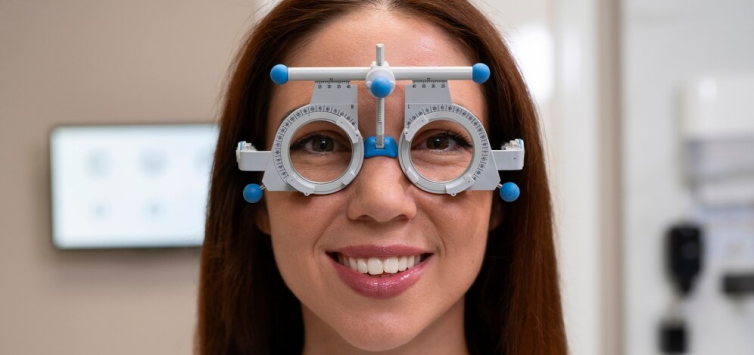Blog
Expert insights for your well-being journey. Your health is our priority.
Combating Digital Eye Strain in a Screen-Dominated World
The World Health Organization (WHO) estimates that 314 million people globally suffer from visual impairment(1), with 269 million experiencing low vision and 45 million classified as blind. This statistic underscores a growing crisis: as our reliance on screens intensifies, so does the prevalence of eye strain.
The rise of digital technology has transformed our daily lives and introduced new challenges for our eye health. Digital eye strain—resulting from prolonged screen exposure—has become a significant concern. Symptoms such as eye fatigue, headaches, and blurry vision not only impact our productivity but also affect our overall well-being.
Addressing these issues is essential to improve comfort and prevent long-term damage to the eyes. This blog post explores digital eye strain, and its impacts, and offers practical solutions to combat this modern ailment.
Understanding Digital Eye Strain

What is Digital Eye Strain?
Digital eye strain, often called screen-induced eye problems, is caused by extended exposure to digital screens. This strain arises from multiple factors, including excessive blue light exposure, decreased blinking rates, and the continuous need for visual focus. These factors collectively contribute to discomfort and visual fatigue.
Symptoms of Digital Eye Strain
Common symptoms of digital eye strain include:
- Headaches: Frequently resulting from prolonged screen use and poor posture.
- Blurry Vision: Caused by overworking the focusing muscles.
- Eye Fatigue: A general sense of tiredness or heaviness in the eyes.
- Dry Eyes: Caused by reduced blinking while using screens.
These symptoms can affect our daily lives, reducing productivity and impacting comfort.
The Impact of Digital Eye Strain
Short-Term Effects
In the short term, digital eye strain can lead to immediate discomfort, including difficulty concentrating and increased frustration. This can result in reduced overall efficiency and performance.
Long-Term Effects
If left unaddressed, digital eye strain can lead to more serious long-term issues such as chronic vision problems, persistent headaches, and sleep disturbances. Prolonged screen exposure may also exacerbate conditions like myopia.
Economic and Social Implications
The economic impact of screen-induced eye problems is substantial, with increased healthcare costs and diminished work performance. Socially, individuals may experience strained relationships and a lower quality of life due to persistent discomfort and reduced engagement in activities.
Preventive Measures for Digital Eye Strain

The 20-20-20 Rule
A practical approach to alleviating digital eye strain is the 20-20-20 rule. This involves taking a 20-second break every 20 minutes by looking at something 20 feet away. This practice helps relax the eye muscles and reduce fatigue.
Practical Tips for Implementation:
- Set reminders on your devices.
- Use apps to track your screen time and prompt breaks.
Adjusting Screen Settings
Adjusting your screen settings can significantly reduce dry eyes from screens.
- Reduce Brightness and Contrast: Lowering these settings can ease eye strain.
- Adjust Color Temperature: Utilizing blue light filters can decrease exposure to harmful blue light, thus, benefiting eye health.
Proper Posture and Ergonomics
Maintaining good posture is crucial in preventing digital eye strain.
Tips for a Healthy Workspace:
- Position your screen at eye level.
- Use an ergonomic chair that supports your back.
- Ensure your feet are flat on the floor and your wrists are in a neutral position.
Regular Breaks
Incorporate short, frequent breaks to rest your eyes. During these breaks, consider eye exercises such as rolling your eyes or focusing on distant objects.
Eye Care Tips

Artificial Tears
Artificial tears can help with dry eyes from screens. Over-the-counter options can provide the necessary moisture and comfort.
Regular Eye Exams
Routine eye exams are essential for managing digital eye strain. Optometrists can offer personalized advice and solutions to improve workplace eye health.
Vision Correction
Specialized glasses or contact lenses designed for screen use can alleviate digital eye strain. Computer glasses are particularly beneficial in reducing discomfort from prolonged screen time.
Technology Solutions
Blue Light-Blocking Glasses
Blue light-blocking glasses are designed to filter out blue light emitted by screens, helping to reduce digital eye strain.
Screen Protectors
Screen protectors with anti-glare features can minimize eye strain by reducing screen glare. Evaluate different options to find one that best suits your needs.
Software Solutions
Various apps and software can help manage screen time. Features such as blue light filters and usage reminders can support healthy screen usage.
Conclusion
Taking proactive steps to manage digital eye strain can lead to significant improvements in both comfort and productivity. By integrating simple practices and leveraging available technology, you can protect your eye health and enhance your overall well-being. Start implementing these strategies today to experience immediate benefits and safeguard your vision for the future.
Statistics Reference: